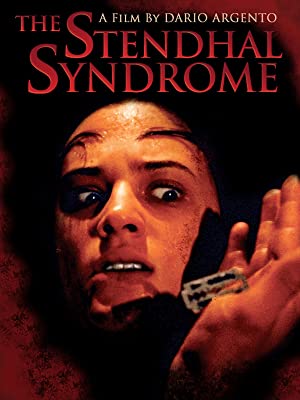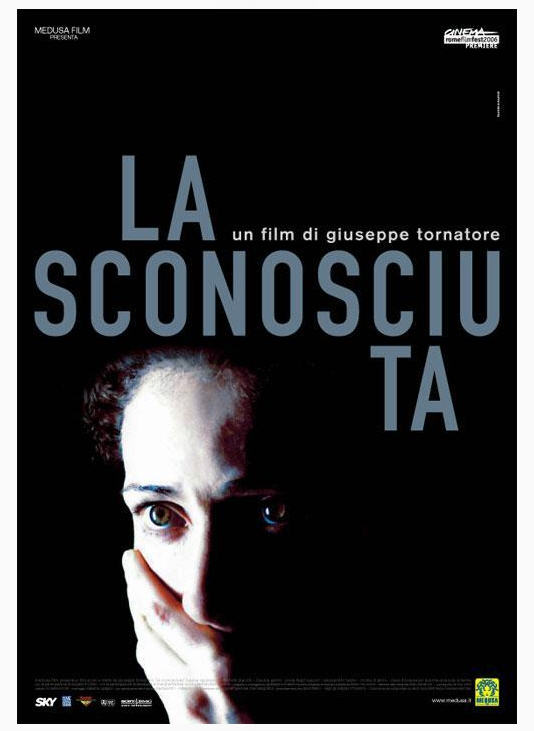La sindrome di Stendhal, The Stendhal Syndrome (1996)
Directed by: Dario Argento
Written by: Dario Argento, Franco Ferrini, Graziella Magherini
Starring: Asia Argento, Marco Leonardi, Thomas Kretschmann
HCF may be one of the newest voices on the web for all things Horror and Cult, and while our aim is to bring you our best opinion of all the new and strange that hits the market, we still cannot forget about our old loves, the films that made us want to create the website to spread the word. So, now and again our official critics at the HCF headquarters have an urge to throw aside their new required copies of the week and dust down their old collection and bring them to the fore…. our aim, to make sure that you may have not missed the films that should be stood proud in your collection. So as promised here’s the second of the two Argento film reviews promised, his most gruelling and disturbing movie!

HCF REWIND NO.39. THE STENDAHL SYNDROME
AVAILABLE ON DVD
DIRECTED BY: Dario Argento
WRITTEN BY: Dario Argento, Franco Ferrini
STARRING: Asia Argento, Thomas Kretchsmann, Marco Leonardi, Luigi Diberti
RUNNING TIME:120 mins/ 118 mins
REVIEWED BY:Dr Lenera, Official HCF Critic
While on the trail of Alfredo Grossi, serial rapist and murderer, policewoman Anna Manni succumbs to the Stendahl syndrome, a feverish reaction to works of art, in Florence’s Uffizi Gallery. She is recognised by Alfredo, and, after Anna has experienced some art-induced hallucinations, Alfredo kidnaps and rapes her. She manages to escape but is understandably severely traumatised. Despite confessing her emotions to a psychiatrist, she spurns her boyfriend Marco, returns to her home town and begins to retreat into a world of her own, painting disturbing pictures, Then Alfredo kidnaps her again, and this time takes her to his underground lair behind a waterfall, where he assaults her again………..
The Stendahl Syndrome, though a major box office success in its native Italy, was mostly received with scorn and even indifference upon release, and, though the film’s reputation has improved slightly over the years, this is one of many occasions where I disagree totally with general opinion. I consider it one of Dario Argento’s boldest and most interesting works and probably his last great movie. It’s an extremely disturbing but also, bizarrely, rather beautiful work of art that seems to deconstruct elements of the giallo into something quite new and interesting. While there are certainly aspects of Tenebrae and Phenomena in the story, it really shows the director doing some new things, while fearlessly giving us glimpses of his psyche in a way that few filmmakers would probably want to. What is a bit of a shame is that, after The Stendahl Syndrome, Argento didn’t explore further down the passageways shown by this film, and his work began to show a tired, lazy quality. Perhaps he had delved as deeply within himself as he has wanted to and subsequently just wanted to have fun with successive projects, and you can’t really blame him for that!
The condition of the ‘Stendahl syndrome’, where someone can experience strange feelings and even hallucinations when looking at art, was not invented; it actually exists, and was first diagnosed in 1982. Argento himself experienced it when he was a child when he was in Athens with his parents where, whilst climbing the steps of the Parthenon, he was overcome by a trance that caused him to become separate from his parents for hours. The Stendahl Syndrome was actually originally going to be shot in America with Daryl Hannah as the lead, but plans fell through and it was relocated to Italy. Still, both Bridget Fonda and Jennifer Jason Leigh [she would have good!] were both offered the lead before Argento’s daughter Asia signed on for the difficult part. Unsurprisingly, it mostly went straight to video outside of Italy and, equally understandably, it was often censored, with the first UK release receiving nearly three minutes of cuts to the rapes and gore, though most export versions also lost two dialogue scenes. Amusingly, the first DVD release in the UK was of the uncut version, but it was quickly withdrawn because the BBFC has not passed it, and replaced with the cut version. Of course now it is available totally uncut, though it has been said that Argento himself prefers the version which loses the two dialogue scenes. He also planned a sequel also featuring Asia’s character; it eventually metamorphised into the [somewhat disapponting] The Card Player.
The initial theme of The Stendahl Syndrome is art, illustrated by the opening titles, where on one side are the credits and on the other side are images of various paintings crawling upwards as if they are on a roll of film. Art of course has featured in many previous Argento movies, from a painting containing a clue to the killer’s madness in The Bird With The Crystal Plumage to a painting actually revealing the killer in Deep Red. The director is obviously fascinated by the effect art can have, so The Stendahl Syndrome having a heroine who actually imagines she can go into paintings is merely a continuation of this concern. The film’s opening sequence, of Anna in the gallery [Argento is the only film director allowed to shoot in Florence’s Uffizi gallery] gradually succumbing to the Stendahl syndrome, is one of Argento’s most bravura. Calm long shots show Anna becoming more and more trapped by the crowds, while shots from her point of view are jittery, almost handheld in nature and dominated by exaggerated sounds of people chattering, all the time while Ennio Morricone’s repetitive theme music, which is basically an eight note pattern repeated over and over again, moves from beauty to tension to madness, while still never deviating from its main musical idea.
The hallucinations are handled in a more restrained manner than Argento may have done ten years before, perhaps because of the more’ serious’ and in some ways realistic nature of the story, though the sights of Anna being kissed by a fish and a painting of a demon with a huge phallus coming to life are profoundly disturbing, and the way Argento marriages this aspect of the film with other strands is ingenious, often combining the visual side with the narrative in a very ambiguous and interesting way. One hallucination sees Anna step into a painting and find herself in the past, where she is being asked to first investigate the case, cleverly giving us exposition without it seeming like exposition, while another actually reveals a waterfall which will later be the killer’s hideout, yet we see Anna virtually bathing in the water, trying to wash away her rape and finding a moment’s beauty and peace in her increasingly fragile existence. There are many other instances of intriguingly chosen shots; for example when Anna and another policeman examine a body we see them from the body’s point of view, and have seemingly beautiful things like statues ever looked more ominous? Nor can you miss some images absolutely rife with symbolism, such as Anna, covered in paint, lying on the floor in the foetal position.
Make no mistake, elements of The Stendahl Syndrome are exceptionally harrowing; the rapes, though relatively short in nature, are supremely nasty and make unpleasant but justified use of shots from Anna’s point of view, and amidst other horrors we also get to see razor slashing, eye gouging, death by car bonnet and a bullet going into one side of a head and out the other. Though the CGI [this was the first Italian film to use a large amount of CGI] is a little poor in this bit and a few others, there is no attempt at aesthetic beauty in this particular movie’s violence. Instead, the viewer is meant to feel as violated as the people receiving it. Likewise, the effect of Alfredo’s assaults on Anna are detailed in a rather painful, even sensitive way, from Anna almost screwing her boyfriend from behind as if she is the man in the relationship, to the disturbing pictures she paints. Echoes of films such as Repulsion reverberate through this study of growing psychological trauma and even madness, but Argento still remembers to give his heroine moments of compassion, of respite from her trauma, such as a tryst in a park with a French student. Critics have complained that the Stendahl syndrome aspect of the film doesn’t have much to do with some of this stuff, though it doesn’t bother me – not everything connects in life either.
The actual script, by Argento and Franco Ferrini, is oddly structured, with the story seeming to end two thirds of the way through, and I remember this really irritating many critics at the time. I think it’s wonderfully audacious. A typical giallo mystery does partially rear its head but otherwise most of its conventions are turned on their head, such as the revelation of Alfredo as the killer and the complete absence of black gloves! In regard to pacing, the film does have problems. At times the film almost draws to a halt, such as during Anna’s visits to her psychiatrist which don’t really tell us anything we can’t work out for ourselves, though at least such scenes give us an opportunity to fully appreciate Asia’s stunning performance. Some have remarked that it is questionable her doing such roles in films directed by her dad, but you cannot deny that she throws herself into this part, and never being less than convincing even if you watched the dubbed version. Thoman Kretchhmann, Argento’s Dracula, doesn’t quite match her though certainly makes an impression even though he’s not in the film that much. Morricone’s endlessly repeated note patterns cast their own strange spell; it’s not a diverse score at all, but works very well for the film. This was his first score for Argento since 1973’s Four Flies On Grey Velvet, where the two had fallen out. The Stendahl Syndrome is not an Argento movie I watch very often – it’s too uncomfortable viewing for that – but every time I do it impresses me a little more. It seems more and more to me his last great movie, possibly his cruellest, but also his bravest and, oddly, his most human and compassionate.







Oh wow, what a review! Loads of information in there as well, very impressive. I must agree that this is Argento’s last classic, and as you say, his cruellest. A real nasty film, filled with brilliance and tons of classic Argento moments. This film has sat very proudly in my collection for years and years, and your review has made me want to dig it out for a re-watch. The unofficial trailer, The Card Player, was crap though. Saying that, I was mildly impressed with Giallo. I think I would’ve scored this a 9 as well mate!
Thanks for your comments mate, and I didn’t think Giallo was too bad either, maybe Dracula 3D could be a real return to form? The trailed wasn’t too promising was it, although the effects hadn’t all been finished.